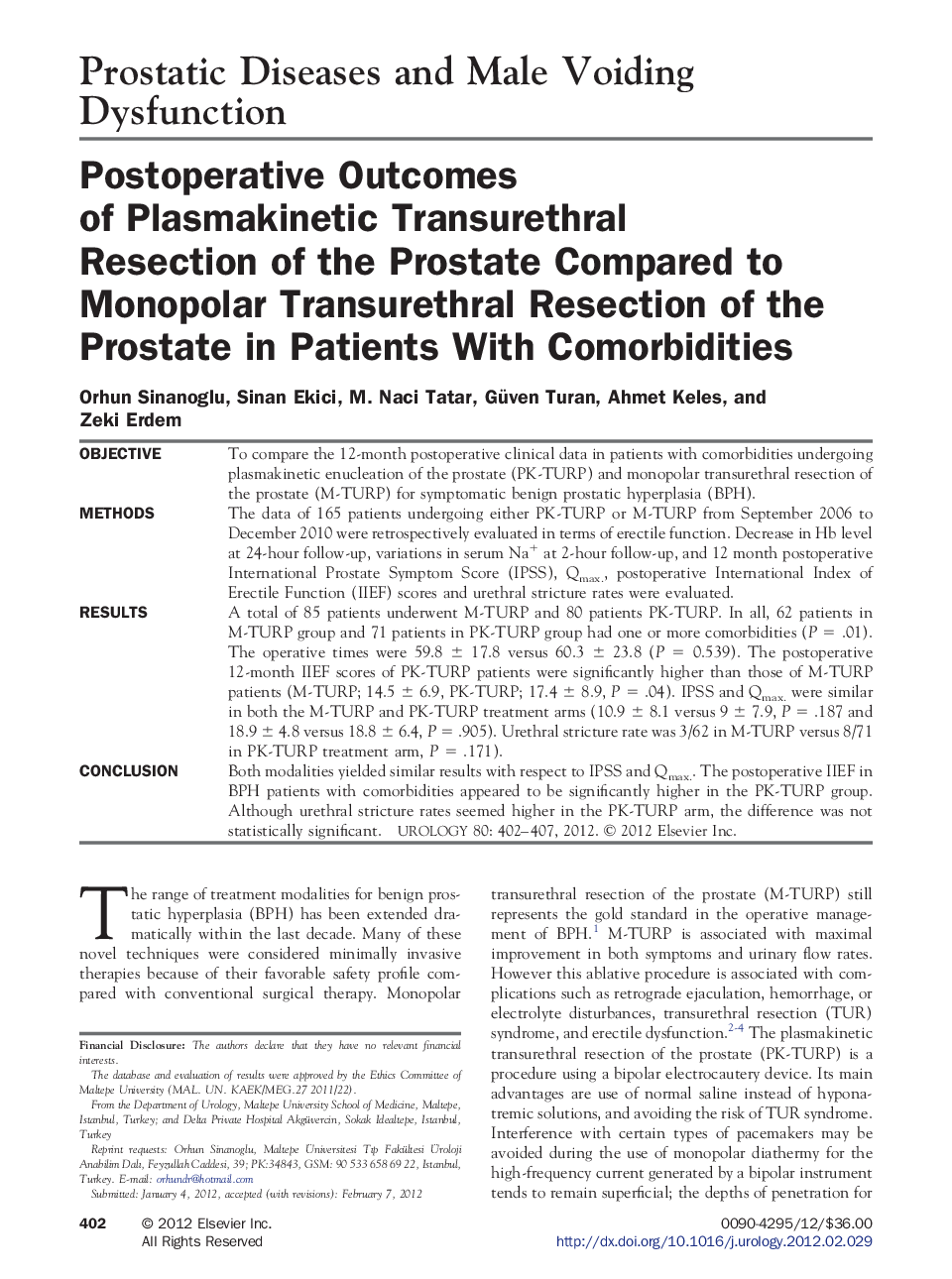| Article ID | Journal | Published Year | Pages | File Type |
|---|---|---|---|---|
| 3899696 | Urology | 2012 | 6 Pages |
ObjectiveTo compare the 12-month postoperative clinical data in patients with comorbidities undergoing plasmakinetic enucleation of the prostate (PK-TURP) and monopolar transurethral resection of the prostate (M-TURP) for symptomatic benign prostatic hyperplasia (BPH).MethodsThe data of 165 patients undergoing either PK-TURP or M-TURP from September 2006 to December 2010 were retrospectively evaluated in terms of erectile function. Decrease in Hb level at 24-hour follow-up, variations in serum Na+ at 2-hour follow-up, and 12 month postoperative International Prostate Symptom Score (IPSS), Qmax., postoperative International Index of Erectile Function (IIEF) scores and urethral stricture rates were evaluated.ResultsA total of 85 patients underwent M-TURP and 80 patients PK-TURP. In all, 62 patients in M-TURP group and 71 patients in PK-TURP group had one or more comorbidities (P = .01). The operative times were 59.8 ± 17.8 versus 60.3 ± 23.8 (P = 0.539). The postoperative 12-month IIEF scores of PK-TURP patients were significantly higher than those of M-TURP patients (M-TURP; 14.5 ± 6.9, PK-TURP; 17.4 ± 8.9, P = .04). IPSS and Qmax. were similar in both the M-TURP and PK-TURP treatment arms (10.9 ± 8.1 versus 9 ± 7.9, P = .187 and 18.9 ± 4.8 versus 18.8 ± 6.4, P = .905). Urethral stricture rate was 3/62 in M-TURP versus 8/71 in PK-TURP treatment arm, P = .171).ConclusionBoth modalities yielded similar results with respect to IPSS and Qmax.. The postoperative IIEF in BPH patients with comorbidities appeared to be significantly higher in the PK-TURP group. Although urethral stricture rates seemed higher in the PK-TURP arm, the difference was not statistically significant.
